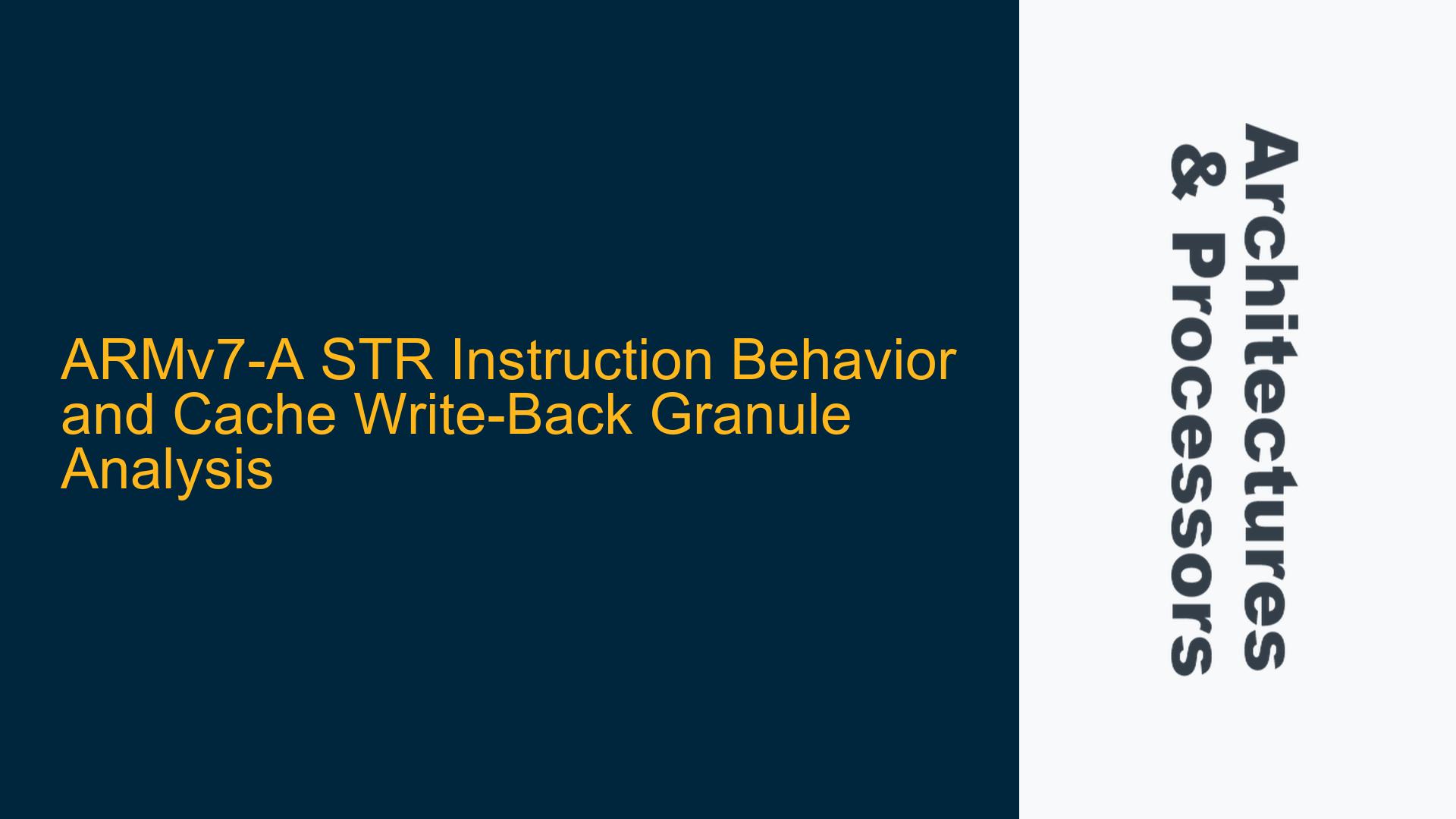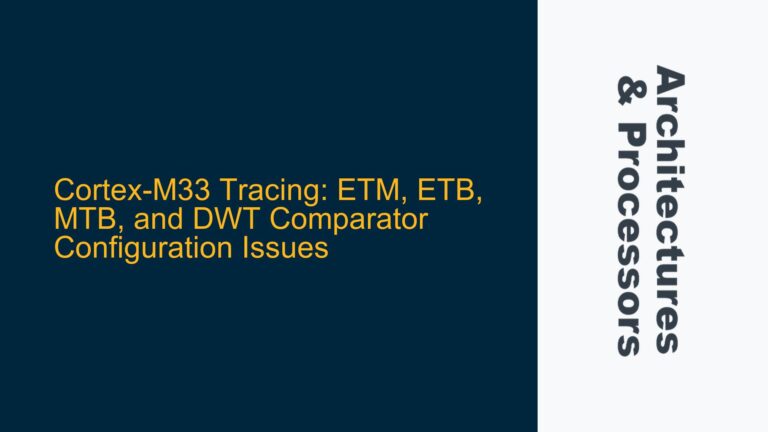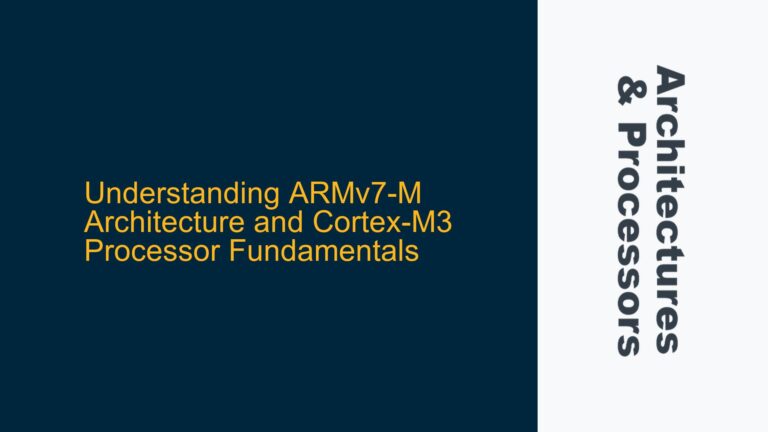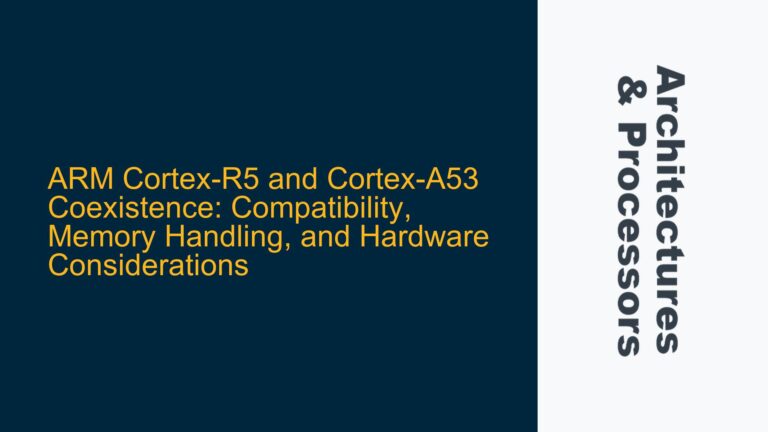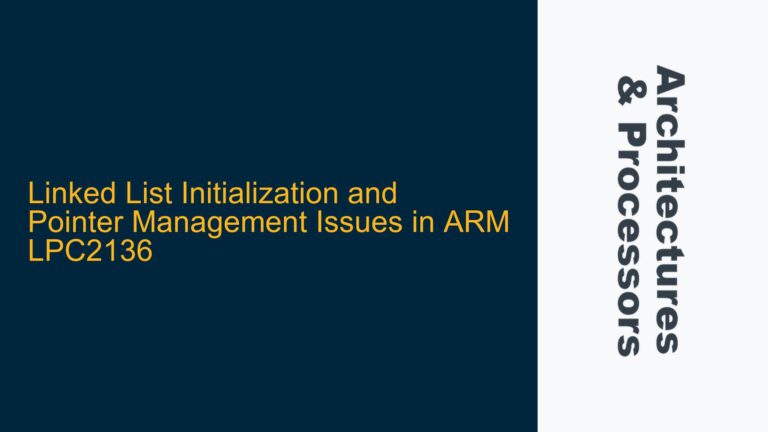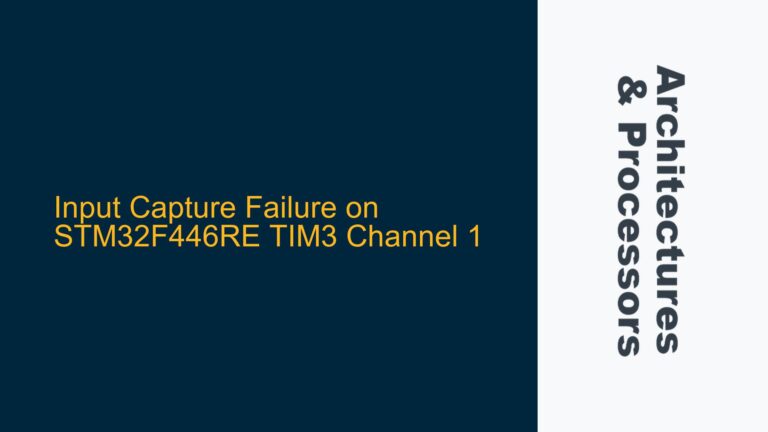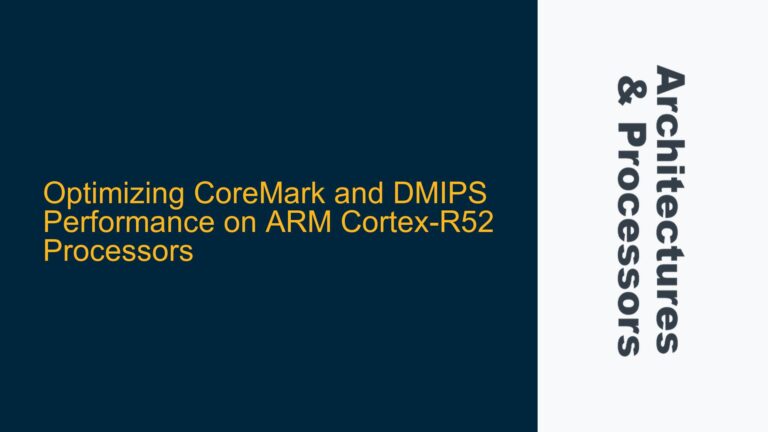ARM Cortex-A9 Cache Write-Back Granule and STR Instruction Impact
The ARMv7-A architecture, particularly when implemented in processors like the Cortex-A9, introduces nuanced behaviors when executing store instructions such as STR. The STR r1, [r0] instruction writes the contents of register r1 to the memory address specified by register r0. However, the interaction between this instruction and the cache subsystem, especially in the context of cache lines and write-back granule size, is not immediately obvious. Cache lines in ARMv7-A are typically 32 bytes long, and the behavior of the cache when a single word (4 bytes) is written can have significant implications for system performance and memory consistency.
The core issue revolves around understanding how the STR instruction affects the entire cache line, particularly in write-through and write-back cache configurations. Specifically, the question is whether writing a single word (4 bytes) to a cache line results in the entire 32-byte cache line being written to backing memory, or if only the modified word is written. This behavior is governed by the Cache Write-back Granule (CWG), a parameter defined in the Cache Type Register (CTR) of the ARMv7-A architecture.
Cache Write-Back Granule (CWG) and Its Role in Cache Eviction
The Cache Write-back Granule (CWG) is a critical parameter defined in the Cache Type Register (CTR) of the ARMv7-A architecture. The CWG specifies the maximum size of memory that can be overwritten as a result of the eviction of a cache entry that has been modified. The CWG is encoded as the base-2 logarithm of the number of words, meaning that a CWG value of 3 corresponds to 2^3 = 8 words, or 32 bytes, which is the size of a typical cache line in ARMv7-A processors like the Cortex-A9.
In the Cortex-A9, the CWG value is 3, indicating that the entire cache line (8 words or 32 bytes) is written back to memory during a cache eviction. This behavior ensures that all modifications within the cache line are propagated to backing memory, maintaining memory consistency. However, this also implies that even if only a single word is modified using the STR instruction, the entire cache line will be written back to memory during eviction. This can lead to inefficiencies, as unnecessary data may be written to memory, increasing bus traffic and potentially impacting performance.
The CWG value also defines the minimum granularity of memory that can be written back. In the case of the Cortex-A9, the minimum granularity is the entire cache line. This means that even if only a single word is modified, the entire cache line must be written back to memory during eviction. This behavior is consistent across all ARMv7-A processors, although the specific CWG value may vary depending on the implementation.
Implementing Cache-Aware Memory Operations for Optimal Performance
To mitigate the performance impact of cache line write-backs, developers must adopt cache-aware memory operations. This involves understanding the cache line size and CWG value for the target processor and structuring memory accesses to minimize unnecessary write-backs. One common technique is to align data structures to cache line boundaries, ensuring that modifications to one data structure do not inadvertently trigger write-backs for unrelated data within the same cache line.
Another technique is to use cache maintenance operations to explicitly manage cache contents. For example, the DCACHE and ICACHE instructions can be used to clean or invalidate cache lines, ensuring that only the necessary data is written back to memory. This approach is particularly useful in scenarios where multiple processors or DMA engines share memory, as it ensures that all parties have a consistent view of memory.
In addition to cache maintenance operations, developers can use memory barriers to enforce ordering constraints on memory accesses. Memory barriers ensure that all previous memory operations are completed before subsequent operations begin, preventing race conditions and ensuring correct behavior in multi-threaded or multi-core environments. The ARMv7-A architecture provides several memory barrier instructions, including DMB (Data Memory Barrier), DSB (Data Synchronization Barrier), and ISB (Instruction Synchronization Barrier), which can be used to enforce different levels of memory ordering.
Finally, developers should consider the impact of cache configuration on system performance. For example, using a write-back cache policy can reduce the frequency of write-backs to memory, as modifications are only written back when the cache line is evicted. However, this approach requires careful management of cache contents to ensure that data is not lost in the event of a power failure or system crash. Conversely, a write-through cache policy ensures that all modifications are immediately written to memory, simplifying cache management but potentially increasing bus traffic and reducing performance.
By understanding the behavior of the STR instruction in the context of cache line size and CWG value, and by implementing cache-aware memory operations, developers can optimize the performance of ARMv7-A systems while maintaining memory consistency and correctness.
